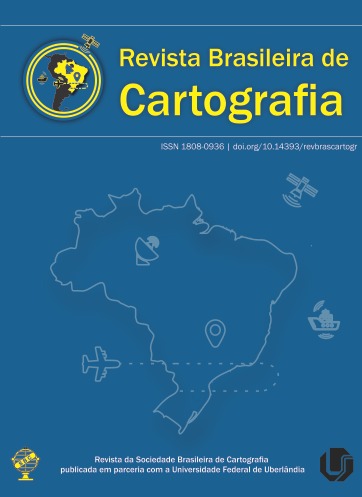Exterior Orientation of CBERS-4/PAN Imagery Using Rigorous Models
Main Article Content
Abstract
The process of geometric correction in orbital images is an indispensable step, that makes feasible the generation of reliable cartographic products, which can be used in many applications. The imagery satellites have embedded sensors integrated with other devices that jointly provide orbital images, which present different levels of details and positional accuracy. Thus, it is important to analyze the quality of the orbital images of the CBERS-4/PAN, which presents a GSD (Ground Sample Distance) of 5 m as well as the procedures that can be adopted to improve them. CBERS-4 is considered a recent satellite and there are few studies on its positional reliability and geometric correction of generated products, mainly of PAN (Panchromatic and Multispectral Camera) images. In this work, the exterior orientation of the CBERS-4/PAN images was performed with the rigorous mathematical model based on the collinearity equations adapted for the pushbroom sensor model. Orbital data were used as a relative constraints and the number of control points were varied – 15, 10 and 5, which coordinates were obtained from the land parcel boundaries registered in INCRA (National Institute of Colonization and Agrarian Reform). Geometrically corrected images with more reliable positional accuracy (10 to 15 m) were generated.
Downloads
Metrics
Article Details
Authors who publish in this journal agree to the following terms:
- Authors retain copyright and grant the journal right of first publication with the work simultaneously licensed under a Creative Commons Attribution License that allows others to share the work with an acknowledgment of the work's authorship and initial publication in this journal.
- Authors can enter into separate, additional contractual arrangements for the non-exclusive distribution of the journal's published version of the work (e.g., post it to an institutional repository or publish it in a book), with an acknowledgment of its initial publication in this journal.
- Authors are permitted and encouraged to post their work online (e.g., in institutional repositories or on their website) before and during the submission process, as it can lead to productive exchanges, as well as earlier and greater citation of published work (see "The Effect of Open Access").





